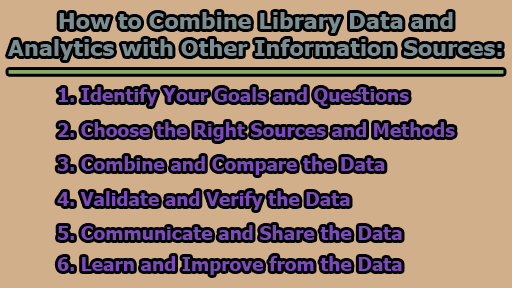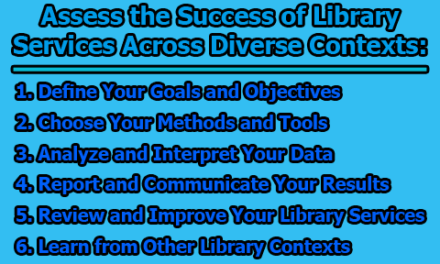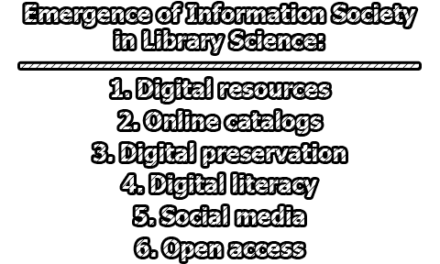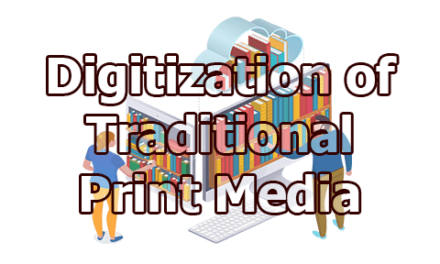How to Combine Library Data and Analytics with Other Information Sources:
In today’s information-driven world, libraries are evolving to meet the changing needs of their users. To stay relevant and provide outstanding services, libraries must harness the power of data and analytics. The key to success lies in effectively integrating library data and analytics with other sources of information. In this article, we’ll explore how to combine library data and analytics with other information sources.
1. Identify Your Goals and Questions: Identifying your goals and questions is the foundational step in effectively using library data and analytics in conjunction with other sources of information. This crucial stage sets the tone for the entire data integration process and ensures that your efforts are aligned with your library’s mission and objectives. Here’s a closer look at this essential phase:
- Strategic Priorities: Start by examining your library’s strategic priorities. What are the overarching goals and missions that drive your institution? These could be related to improving access to information, enhancing user experience, increasing community engagement, or any other strategic focus areas. Clearly defining these priorities will provide a strategic context for your data analysis efforts.
- Performance Indicators: Determine the key performance indicators (KPIs) that reflect your library’s success in achieving its strategic priorities. For example, if your library’s priority is to increase community engagement, relevant KPIs might include program attendance, the number of library cards issued, or website engagement metrics. Identifying these metrics allows you to track your progress toward your strategic goals.
- User Needs: Understanding your users’ needs is paramount. Conduct user surveys, focus groups, and feedback sessions to gather insights into what your patrons require from your library. These insights will help shape your data collection efforts and ensure that your library’s services are user-centric.
- Challenges: Acknowledge and document the challenges your library faces. Are there resource constraints, staff limitations, or technological barriers that need to be addressed? Identifying these challenges helps you prioritize and allocate resources effectively.
- Impact and Value Measurement: To demonstrate the value your library brings to the community, develop methods to measure your library’s impact. This can include tracking the number of books borrowed, the use of digital resources, or the attendance at library events. By quantifying your impact, you can convey your value to stakeholders.
- Guiding Questions: Craft specific questions that will guide your data collection and analysis efforts. These questions should be aligned with your library’s strategic priorities and KPIs. For example, if your priority is to improve digital resources access, a guiding question might be, “What factors contribute to increased usage of our digital resources, and how can we enhance it further?”
By addressing these aspects, you’ll be well-prepared to embark on the journey of integrating library data and analytics effectively. Well-defined goals and guiding questions provide a roadmap, ensuring that your data-driven decisions are purposeful and geared toward enhancing your library’s services, collections, and user experience. This strategic approach is essential to making the most of the data at your disposal.
2. Choose the Right Sources and Methods: Depending on your specific goals and questions, you may need to utilize various sources and methods. Library statistics, such as circulation, visits, and downloads, can help track usage and trends. Surveys, interviews, and focus groups are ideal for gathering user feedback, satisfaction, and preferences. External data, including demographics, benchmarks, and standards, allow you to compare your performance and identify opportunities for improvement. Tailoring your sources and methods to your objectives is crucial for effective data collection.
3. Combine and Compare the Data: Once you’ve collected data from multiple sources, the next step is to combine and compare them to create a comprehensive and meaningful picture. Visualization tools like dashboards, charts, and tables can help summarize your data effectively. Statistical techniques like correlation, regression, and factor analysis allow you to explore relationships and patterns among your data. Qualitative methods, such as thematic analysis, coding, and storytelling, help interpret and explain your findings.
4. Validate and Verify the Data: It’s important not to rush to conclusions or recommendations without validating and verifying your data and analytics. Ensure the quality, accuracy, and reliability of your data sources and methods. Assess the limitations, biases, and assumptions inherent in your data. Test the validity, significance, and generalizability of your findings and results.
5. Communicate and Share the Data: To maximize the impact of your data and analytics, effective communication is key. Tailor your message, format, and tone to your target audience and purpose. Highlight key insights, implications, and actions arising from your data. Make your findings engaging and persuasive through storytelling, visualization, and infographics. Sharing your results with stakeholders, including users, staff, management, and funders, helps ensure your library’s services align with their needs and expectations.
6. Learn and Improve from the Data: The final step in this data-driven journey is continuous learning and improvement. Monitor and evaluate the impact and outcomes of your data-driven decisions and actions. Gather feedback and suggestions from stakeholders on how to enhance your data and analytics processes. Adapt and refine your goals, questions, sources, and methods as your library’s situation and needs evolve.
In conclusion, in a rapidly changing world, libraries must adapt and provide value to their communities. Harnessing the power of library data and analytics in conjunction with surveys, feedback, and external benchmarks is a dynamic approach to delivering exceptional services, collections, and user experiences. By following these best practices, libraries can make informed decisions, foster effective communication, and continuously improve their offerings to meet the ever-evolving needs of their users.

Former Student at Rajshahi University










